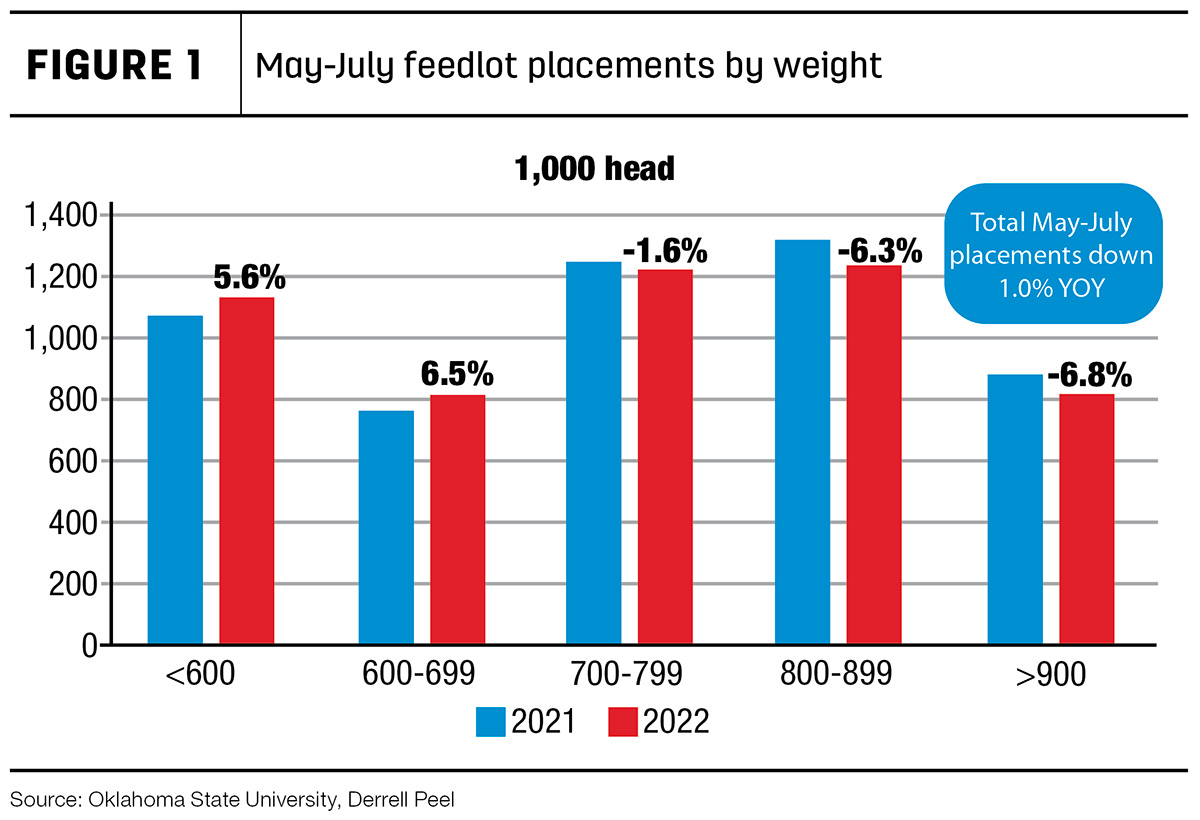Aided and abetted by the drought, feedlots put together another month of large placements in July. July placements were 101.8% of last year, despite growing indications that feeder supplies are declining. July 1 estimated feeder supplies outside of feedlots were down 2.7% year over year. Drought continues to force cattle to market sooner than planned. Oklahoma auction volumes of feeder cattle for the past six weeks are up 10.9%, consistent with the unexpectedly large placements in July.
July feedlot placements included a 2.5% decrease in feeders weighing over 700 pounds, which was more than offset by a 9.5% increase in feeders weighting less than 700 pounds. Figure 1 shows that this is the third month in a row with increased placements of lightweight feeders and decreased placement of heavy feeders. Total feedlot placements in May through July were down 1%, with placements under 700 pounds up 6% and placements over 700 pounds down 4.7%. These lightweight placements will finish from November into the first quarter of 2023.

In fact, feedlot placements in the past six months, since February, have totaled 10.91 million head, up 0.8% year over year, and account for 97.2% of the 11.224 million head on-feed inventory on Aug. 1. In those six months, placements weighing under 700 pounds are up 3.5% year over year, while placements over 700 pounds are down 0.7%. All of this suggests that feedlots are somewhat back-loaded with relatively tighter numbers finishing in the August through October period and recent lightweight placements finishing November and later.
The implications for feeder cattle markets may be even more important. Increased lightweight placements, especially since May, likely includes fall calves marketed right off the cow, early weaned spring calves and summer stockers marketed ahead of schedule. Pasture and range conditions are currently rated at 52% poor/very poor, the worst level for this time of year since 2012. It appears that the supply of calves and feeder cattle available this fall will likely be significantly smaller because many cattle have already moved to market.
Feeder cattle prices have been quite strong this summer with heavy feeder prices moving higher by more than seasonal amounts and calf prices moving counter-seasonally higher. In Oklahoma auctions, 750-pound steers reached the highest prices of the year in mid-August and 500-pound steer calves reached the highest level since the seasonal peaks in March. The trend for higher feeder cattle prices may severely diminish or offset seasonal lows for calves this fall.
This originally appeared in the Aug. 22, 2022, OSU Cow/Calf Corner newsletter.








